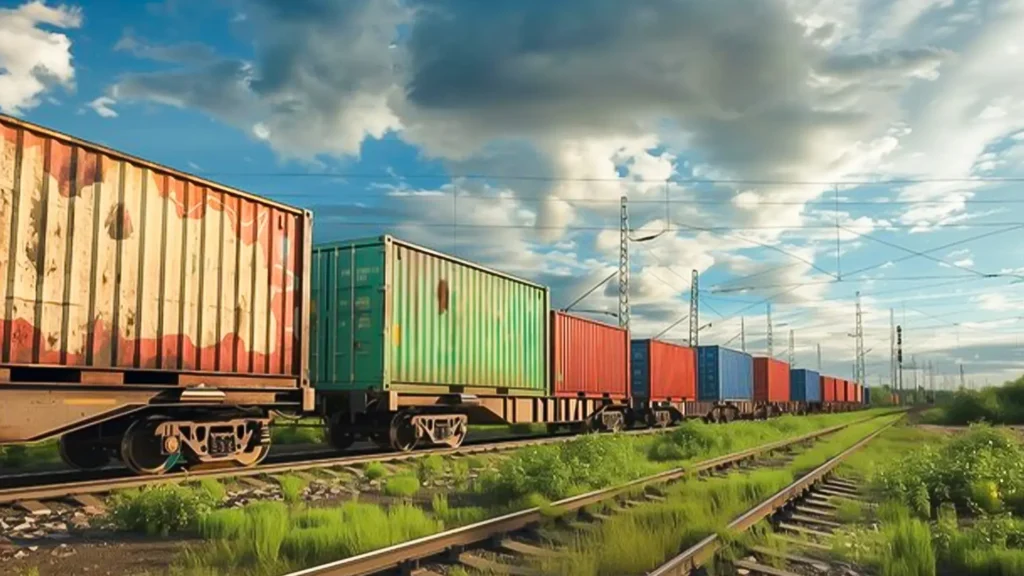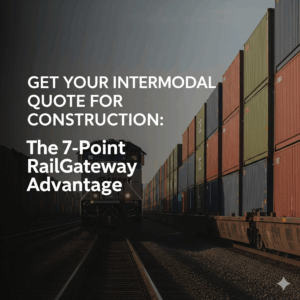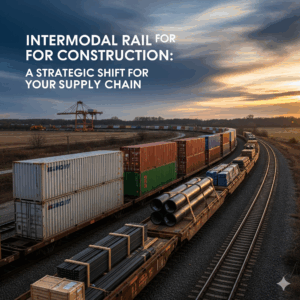In today’s fast-paced global economy, moving goods efficiently and sustainably has never been more critical. At the heart of large-scale shipping and logistics, especially in North America, stands the freight train—a powerhouse mode of transportation that plays a vital role in freight movement across vast distances. As supply chains evolve and demand grows in 2025, understanding the ins and outs of freight trains is essential for businesses aiming to optimize shipping costs, improve delivery reliability, and reduce environmental impact.
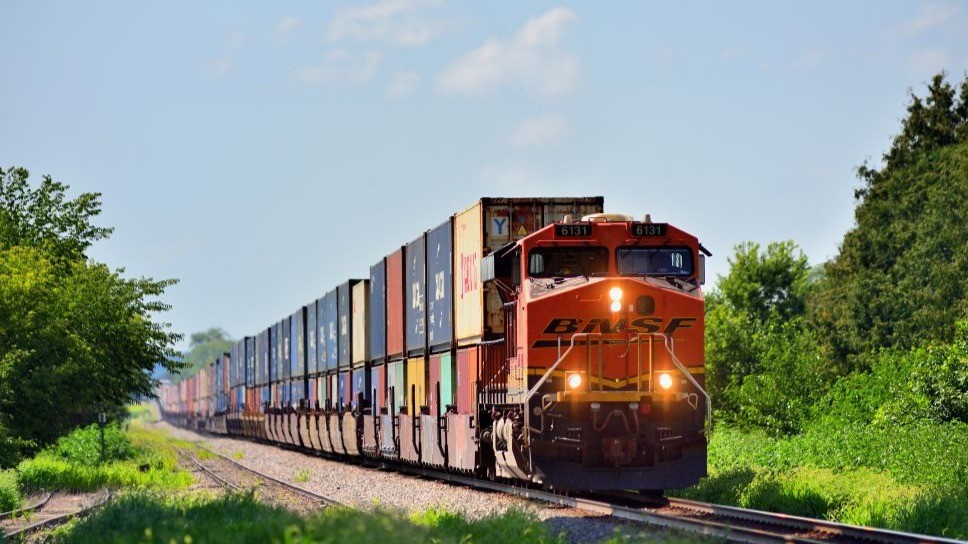
What Is a Freight Train?
A freight train is a long string of connected railcars or wagons specifically designed to carry various types of cargo. Unlike passenger trains, freight trains are built to transport bulk goods such as raw materials, finished products, machinery, and even hazardous materials. Freight trains operate on dedicated rail networks and cover extensive routes that link ports, manufacturing hubs, warehouses, and distribution centers.
The efficiency and capacity of freight trains make them an indispensable part of the logistics ecosystem. In 2025, freight trains continue to lead in moving large volumes of goods quickly, safely, and cost-effectively across regions—especially for industries relying on heavy or bulky shipments.
The Role of Freight Trains in Modern Supply Chains
Freight trains serve as the backbone of many supply chains, particularly for industries like agriculture, mining, automotive, and retail. Their ability to haul thousands of tons of cargo in a single trip offers significant advantages over road or air transport. Freight trains also complement other modes such as trucking and shipping, forming critical links in intermodal logistics.
One key strength of freight trains is their scalability. A single train can replace dozens of trucks on the highway, alleviating road congestion and reducing carbon emissions. This scalability helps companies meet sustainability goals while controlling transportation costs—a priority that has only intensified in 2025 as governments and consumers demand greener operations.
Moreover, freight trains provide reliable transit times on fixed schedules and well-maintained rail corridors. For businesses shipping time-sensitive products or managing just-in-time inventory, incorporating freight trains into their transportation mix ensures predictable delivery windows and fewer delays caused by road traffic or weather disruptions.
Advantages of Freight Trains in 2025
As logistics challenges multiply in 2025, freight trains offer several distinct advantages:
- Cost Efficiency: Freight trains can transport massive volumes at a fraction of the cost of road transport per ton-mile, especially over long distances. This efficiency lowers overall shipping expenses and allows businesses to maintain competitive pricing.
- Environmental Benefits: Rail transport emits significantly less greenhouse gas compared to trucks and airplanes, supporting corporate sustainability initiatives and compliance with stricter environmental regulations.
- Capacity: Freight trains handle very large shipments that would be impractical or prohibitively expensive by road, such as heavy industrial equipment or bulk raw materials.
- Safety and Reliability: Rail networks experience fewer accidents and delays caused by traffic congestion or adverse weather. This reliability is vital for industries where timing and cargo integrity are paramount.
- Intermodal Compatibility: Freight trains seamlessly connect with trucking and shipping services, enabling smooth multimodal transport solutions that enhance last-mile delivery.
Challenges Facing Freight Trains and Industry Innovations
Despite their strengths, freight trains face challenges such as infrastructure maintenance costs, scheduling coordination, and adapting to fluctuating demand. However, 2025 is seeing transformative technological advances addressing these issues:
- Digital Tracking and Automation: Railroads are investing in GPS tracking, automated yard operations, and AI-driven scheduling to improve efficiency and visibility.
- Sustainable Technologies: The rise of hybrid locomotives and alternative fuels is reducing the carbon footprint of rail freight.
- Enhanced Intermodal Facilities: Modern terminals and transloading centers streamline the transfer of goods between trains and trucks, speeding up deliveries.
Why Freight Trains Matter More Than Ever in 2025
In an era where supply chains are scrutinized for speed, cost, and environmental impact, freight trains offer a powerful solution to the challenges facing large-scale shipping. Their unmatched ability to move vast quantities of goods safely and economically continues to make them the backbone of North American logistics networks.
For businesses aiming to thrive in 2025, understanding freight train logistics is key to unlocking smarter shipping strategies. Whether optimizing bulk shipments, reducing carbon emissions, or leveraging intermodal transport, freight trains remain a critical asset in the pursuit of efficient, scalable, and sustainable freight solutions.
Types of Freight Trains
The world of freight trains is filled with a diverse range of specialized cars, each designed to transport specific types of cargo and each with some unique perk. Let’s take a look at them and their unique services –
Boxcars:
- Versatile:
Boxcars are one of the most versatile types of freight cars, capable of transporting a wide range of goods.
- Protection:
Their enclosed structure protects cargo from the elements, making them suitable for transporting perishables, manufactured goods, and other items that require protection.
- Adjustable Shelving:
Boxcars often have adjustable shelves to accommodate various cargo sizes, ensuring efficient use of space.
- Refrigerated Boxcars:
Some boxcars are equipped with refrigeration units to transport perishable goods such as fruits, vegetables, and meats.
Flatcars:
- Oversized Cargo:
Flatcars are specifically designed to transport oversized items that cannot fit into enclosed cars.
- Flexibility:
Their open design allows for easy loading and unloading of bulky items such as vehicles, heavy equipment, and building materials.
- Specialized Variations:
Flatcars come in various variations, such as center beam flatcars, which are optimized for transporting stacked lumber.
Tanker Cars:
- Liquid Transportation:
Tanker cars are essential for transporting large quantities of liquids, including crude oil, refined petroleum products, and chemicals.
- Safety:
Their design ensures safe and efficient transportation of these hazardous materials.
- Specialized Tanks:
Tanker cars come in different types, such as pressurized tank cars for volatile chemicals and insulated tank cars for sensitive materials.
Hopper Cars:
- Bulk Commodities:
Hopper cars are ideal for transporting bulk commodities such as coal, grain, and iron ore.
- Efficient Unloading:
Their bottom opening facilitates quick and efficient unloading, reducing turnaround time.
- Covered Hopper Cars:
Covered hopper cars are used to protect materials from the elements, making them suitable for transporting crops and chemicals.
Coil Cars:
- Steel Transportation:
Coil cars are specifically designed to transport rolled steel coils, which are used in various manufacturing processes.
- Secure Transportation:
Their unique structure with troughs or cradles ensures that steel coils remain securely in place during transit.
- Efficiency:
Coil cars streamline the transportation of steel, making them essential for industries that rely on this material.
Refrigerator Cars:
- Perishable Goods:
Refrigerator cars, also known as “reefers,” are equipped with cooling systems to transport perishable goods over long distances.
- Freshness:
These cars help maintain the quality and freshness of products such as meats, fruits, and vegetables.
- Food Supply Chain:
Refrigerator cars play a vital role in the food supply chain, ensuring that fresh produce can be transported to markets across vast distances.
Gondolas:
- Bulk Cargo:
Gondolas are open-topped cars that are suitable for transporting bulk cargo such as minerals, coal, scrap metal, and lumber.
- Flexibility:
Their open design allows for easy loading and unloading of large quantities of cargo from the top or the side.
- Heavy Duty:
Gondolas are built to handle heavy and bulky materials, making them essential for industries that require robust transportation solutions.
Centerbeam Cars:
- Lumber and Building Materials:
Centerbeam cars are primarily used for transporting lumber and other building materials.
- Efficient Loading:
Their design allows for balanced loading on either side of the central beam, maximizing cargo space.
- Tie-Down Points:
Centerbeam cars have tie-down points to secure loads and prevent shifting during transit.
Intermodal Cars:
- Container Transportation:
Intermodal cars, also known as well cars, are designed to transport intermodal containers.
- Seamless Transitions:
These cars facilitate the seamless transfer of cargo between ships, trains, and trucks.
- Efficiency:
Intermodal cars streamline the shipping process, making it more cost-effective and efficient.
Specialty Cars:
- Unique Needs:
Specialty cars are designed to meet specific transportation requirements that cannot be met by standard freight cars.
- Examples:
Some examples of specialty cars include autorack cars for transporting vehicles, pressurized tank cars for certain gases or liquids, and cars for transporting oversized project cargo.
- Versatility:
The development of specialty cars demonstrates the adaptability and versatility of rail freight transportation.
As technology continues to advance, we can expect to see further innovations in freight train design and operations. The future of rail freight transport will be affected by advances in automation, electrification, and sustainability.

Why Are Freight Trains So Popular?
The reason why freight trains are so popular is because of containerization. Containerization has completely changed how we ship things around the world.
It started in the middle of the 20th century and uses special boxes of the same size to move goods easily between ships, trucks, and trains. This made it much faster and cheaper to ship things. As a result, ports became more efficient, ships could load and unload faster, and the cost of delivering things around the world became less costly.
Today, technology has made containerization even better. We can track shipments in real-time and use machinery to load and unload containers faster.
This has helped countries to connect with each other more closely. As goods can be shipped across the world in a very short time.
Want to know more? Contact us and ask your queries!
Conclusion
As we look ahead into 2025 and beyond, the role of the freight train remains fundamental to achieving efficient, reliable, and sustainable large-scale shipping. Freight trains are no longer just a traditional transportation mode—they are evolving into technologically advanced, eco-friendly, and highly integrated solutions that are vital for modern supply chains.
The growing demand for faster, more predictable delivery of goods across continents and within national borders places freight trains at the forefront of logistics innovation. From raw materials to finished consumer products, freight trains move massive volumes daily, efficiently bridging gaps between ports, factories, warehouses, and distribution hubs.
The Strategic Advantage of Freight Trains in 2025 Shipping
In 2025, businesses must optimize every leg of their supply chain, and freight trains offer strategic advantages that cannot be overlooked:
- Massive Capacity with Cost-Effectiveness: Freight trains can haul thousands of tons of cargo in a single trip at a lower cost per ton-mile than road or air transport. This cost-efficiency is particularly advantageous for long-haul shipments and bulk goods that form the backbone of many industries.
- Sustainability and Environmental Responsibility: With growing regulatory pressure and corporate commitments to reduce greenhouse gases, freight trains provide an eco-friendly alternative to trucking. Rail emits up to 75% less greenhouse gas per ton-mile compared to trucks, making it the preferred choice for companies focused on sustainable shipping.
- Reliability and Safety: Freight trains operate on dedicated rail lines with controlled schedules, reducing the risk of delays caused by road congestion or accidents. This reliability is critical for businesses with tight delivery timelines and high-value shipments.
- Intermodal Integration: The integration of freight trains with trucking, shipping, and air cargo is seamless in 2025, enabling efficient door-to-door logistics solutions. Freight trains serve as the heavy-haul backbone, while trucks provide the crucial last-mile delivery, creating a hybrid model that maximizes speed and cost efficiency.
Innovations Driving Freight Train Efficiency
2025 brings exciting technological advances that further strengthen the role of freight trains:
- Digital Freight Tracking: Real-time GPS tracking and advanced analytics provide shippers with complete visibility into freight train movements. This transparency helps optimize routes, anticipate delays, and improve inventory management.
- Automation and Smart Rail Yards: Automated loading and unloading systems reduce turnaround times at rail yards, boosting overall network efficiency.
- Sustainable Locomotives: Hybrid engines, battery-electric models, and alternative fuels such as hydrogen are revolutionizing locomotive design, reducing emissions and fuel consumption.
- Enhanced Infrastructure: Investments in rail infrastructure, including upgraded tracks, bridges, and terminals, ensure smoother operations and higher speeds for freight trains, further improving transit times.
Challenges and the Future Outlook
While freight trains provide many benefits, challenges remain. Rail infrastructure requires ongoing investment and maintenance to keep pace with growing demand. Coordination between rail operators, trucking companies, and shippers is critical to minimize delays and maximize capacity.
However, the future outlook for freight trains in 2025 is optimistic. Governments and private sectors are collaborating to enhance rail corridors and invest in green technologies, supporting the continued growth of freight rail.
Conclusion
Understanding the capabilities and advantages of the freight train is essential for businesses aiming to optimize their shipping strategies in 2025. Whether you are shipping bulk commodities, manufactured goods, or time-sensitive products, freight trains offer a scalable, reliable, and sustainable solution for large-scale shipping needs.
By integrating freight trains with other transport modes and leveraging emerging technologies, companies can create resilient, cost-effective supply chains that meet the demands of today’s dynamic market. The freight train is not just a mode of transport – it is the backbone of efficient, large-scale shipping in 2025 and beyond.
Contact RailGateway Today for a free quote or more information
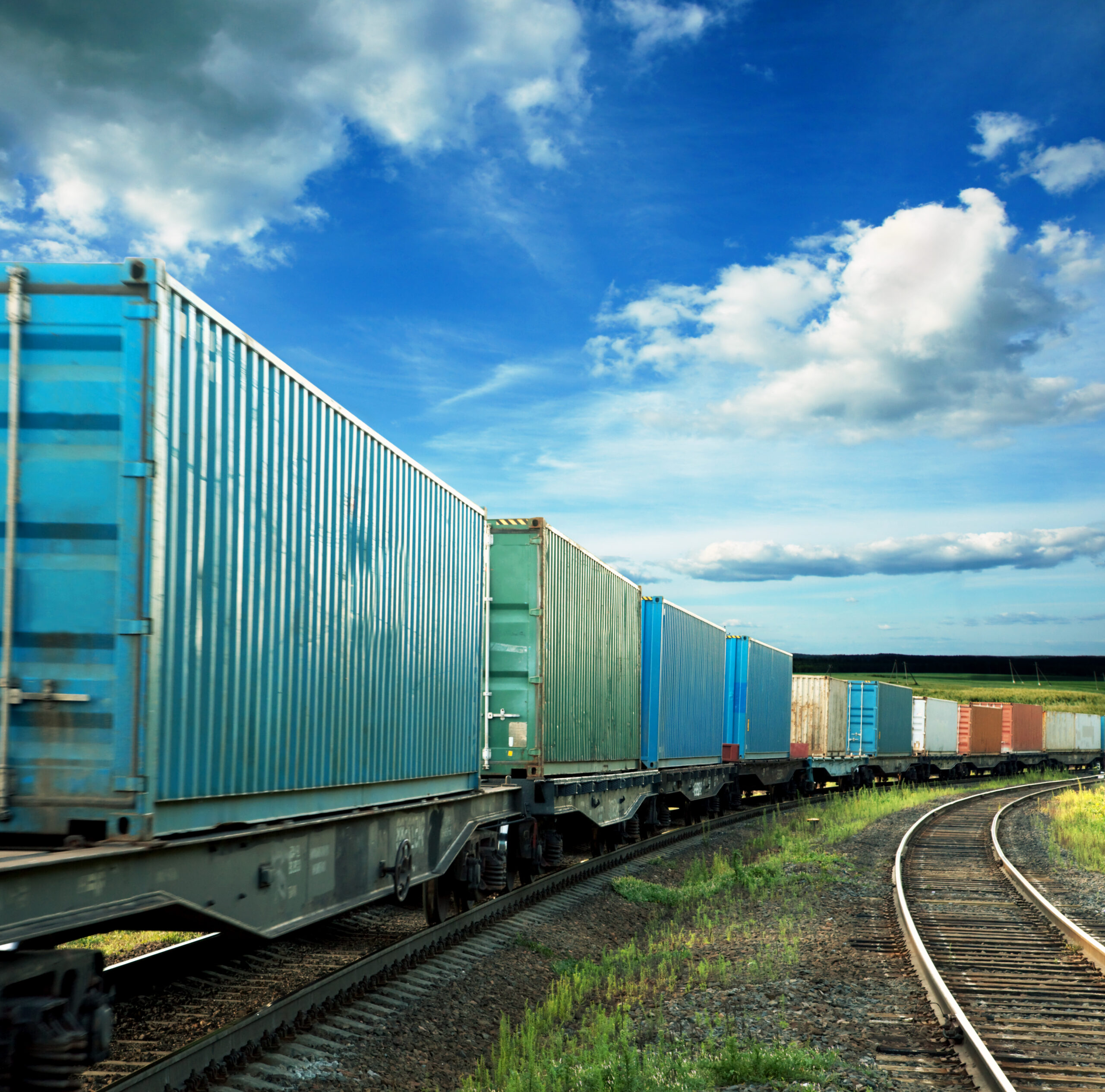
FAQ
1. What types of cargo are best suited for trains?
Freight trains are ideal for bulk and heavy cargo such as coal, grain, chemicals, vehicles, and large manufactured goods. They also accommodate temperature-sensitive items using refrigerated railcars. Their versatility allows them to handle diverse freight types efficiently.
2. How do trains contribute to sustainability in shipping?
Freight trains produce significantly lower greenhouse gas emissions per ton-mile compared to trucks and airplanes. Their ability to move large volumes on a single trip reduces fuel consumption and traffic congestion, supporting corporate sustainability goals.
3. Are trains faster than trucks for shipping?
While trucks offer faster door-to-door service over short distances, freight trains excel at long-haul shipments by transporting large volumes at consistent speeds. When combined with trucking for last-mile delivery, freight trains provide an efficient balance of speed and capacity.
4. What technologies are improving train operations in 2025?
Advances include GPS tracking, AI-powered route optimization, automated rail yard systems, and sustainable locomotive technologies like battery-electric and hydrogen engines. These innovations enhance efficiency, reliability, and environmental performance.
5. How do trains fit into intermodal shipping?
Freight trains serve as the core leg of intermodal shipping by moving containers or trailers over long distances. Trucks then handle the last-mile delivery, creating a seamless and flexible shipping network that combines the strengths of multiple transportation modes.
6. How do trains improve supply chain efficiency?
Freight trains enhance supply chain efficiency by moving large volumes of goods over long distances quickly and reliably. Their ability to operate on fixed schedules and dedicated rail lines reduces delays and keeps shipments on track, making them ideal for large-scale logistics.
7. What role do trains play in intermodal shipping?
Freight trains are a crucial component of intermodal shipping, transporting containers between ports and inland distribution centers. This integration with trucks and ships enables smooth, cost-effective, and environmentally friendly end-to-end freight solutions.
8. Are freight trains suitable for time-sensitive cargo?
Yes, freight trains can be used for time-sensitive shipments, especially when combined with efficient last-mile trucking services. Their reliability and scheduled routes help meet delivery deadlines better than some other bulk shipping methods.
9. How is technology changing freight train operations?
Technological advances such as real-time GPS tracking, automated rail yards, and AI-driven scheduling optimize freight train operations. These innovations improve transit times, reduce costs, and increase cargo security in modern freight rail networks.
10. What are the main challenges in using freight trains for shipping?
Challenges include infrastructure limitations, coordination between rail operators and trucking companies, and capacity constraints during peak demand. However, ongoing investments and technological improvements are addressing these issues to enhance freight train service reliability.
Additional Resources
- Association of American Railroads (AAR) – Freight Rail Benefits
Learn about the economic and environmental benefits of freight rail in North America.
https://www.aar.org/issue/freight-rail-benefits/ - Federal Railroad Administration (FRA) – Freight Rail Overview
Comprehensive information on the role and regulation of freight rail in the United States.
https://railroads.dot.gov/about-fra/fra-newsroom/freight-rail-overview - Transport Canada – Rail Freight Facts
Official statistics and reports on freight rail operations in Canada.
https://tc.canada.ca/en/rail-transportation/rail-freight - U.S. Environmental Protection Agency (EPA) – Greenhouse Gas Emissions from Freight Transportation
Details on emissions by mode of freight transport, highlighting rail’s environmental advantages.
https://www.epa.gov/greenvehicles/greenhouse-gas-emissions-typical-passenger-vehicle - International Energy Agency (IEA) – The Future of Rail: Opportunities for Energy and the Environment
Analysis of energy use and sustainability in rail transport globally.
https://www.iea.org/reports/the-future-of-rail - Journal of Commerce – Intermodal Rail Shipping Trends
Industry insights and trends shaping intermodal rail shipping in North America.
https://www.joc.com/rail-intermodal - Railway Age – Technological Innovations in Freight Rail
Articles about new technologies improving freight train efficiency and safety.
https://www.railwayage.com/intermodal/technology/ - Canadian National Railway (CN) – Sustainable Rail Solutions
CN’s approach to sustainability in freight rail transport.
https://www.cn.ca/en/sustainability/ - Union Pacific Railroad – Rail Industry Facts and Figures
Facts, figures, and information about freight rail operations and infrastructure.
https://www.up.com/aboutup/facts/index.htm - American Public Transportation Association (APTA) – Rail Freight and Public Policy
How freight rail fits into broader transportation policy and infrastructure development.
https://www.apta.com/research-technical-resources/rail/
How We Can Help
For businesses looking to optimize their freight shipping with reliable, efficient, and cost-effective solutions, RailGateway.ca is your trusted partner in intermodal logistics. Whether you’re new to freight trains or want to enhance your existing supply chain, our team of intermodal experts is ready to guide you every step of the way.
Contact RailGateway.ca today for a free quote or to speak directly with one of our experienced intermodal specialists. Let us help you unlock smarter, smoother shipping solutions tailored to your unique needs. Visit RailGateway.ca or call us to get started on transforming your freight shipping strategy in 2025 and beyond.

